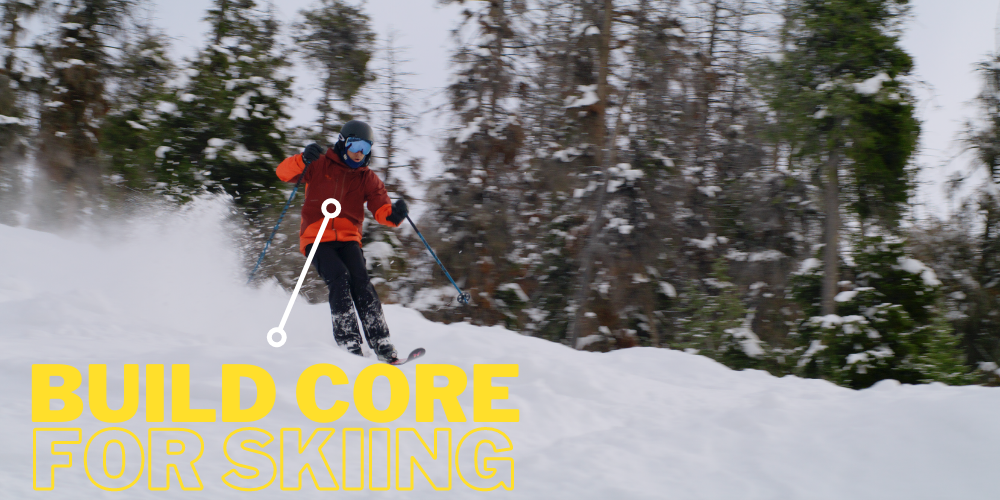
Easiest Way To Build Core Strength For Skiing
Ever wonder how to build core strength for skiing with zero equipment? I got you covered! And although I don’t typically celebrate this exercise for skiers, the plank position does have benefits if it’s done correctly.
Skiers can benefit from the plank because it improves isometric core strength while loading your quads and hip flexors. But why does this matter for skiing?
When you ski down the hill, the majority of the turns are spent in isometric contractions. That means the muscle is contracted but it’s not getting longer or shorter. To feel this, Imagine holding your arm out straight, palm up, and placing a cup of coffee in your hand. If you try to hold this as long as you can, you will begin to feel a burn as your arm fails to maintain this isometric contraction. The arm will give out and the cup will fall.
On snow, your quads and core muscles will stay contracted to maintain tension through most turns. Of course, mogul turns are a terrible example because there’s constant flexion and extension happening throughout the legs to accommodate the contour of the moguls.
For almost all other turns, the plank buffers these skills. Unfortunately, the plank is the most frequent incorrectly performed exercise. This is primarily because almost everyone has done a plank growing up but very few people have been instructed on the proper mechanics. Meanwhile, mechanics and alignment are important because they keep the tension in your abdomen and leg muscles, not your shoulders, neck, and back.
Check out these common deviations followed by what you should aim for when planking. Once you have the form down, I highly recommend doing more intense planks for less time. Think aggressive full body contractions for 10-15 seconds instead of long holds for 60-90 seconds. This generates more muscle stimulation and greater improvement in core stability.
Error 1: “Broken Chain”
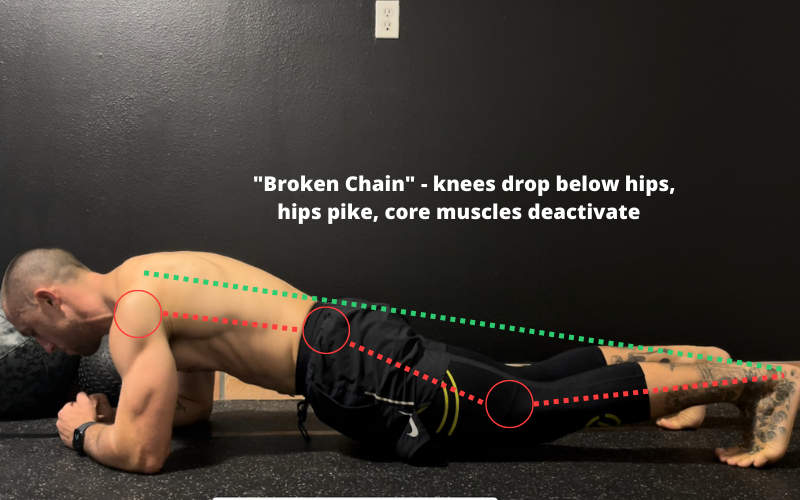
The most common plank error I see. The fix here is simple; flex your knees to lock out the leg. This will take pressure off the low back. Then lift your hips away from the floor and squeeze your belly button and buttocks.
Error 2: “Aggressive Hip Pike”
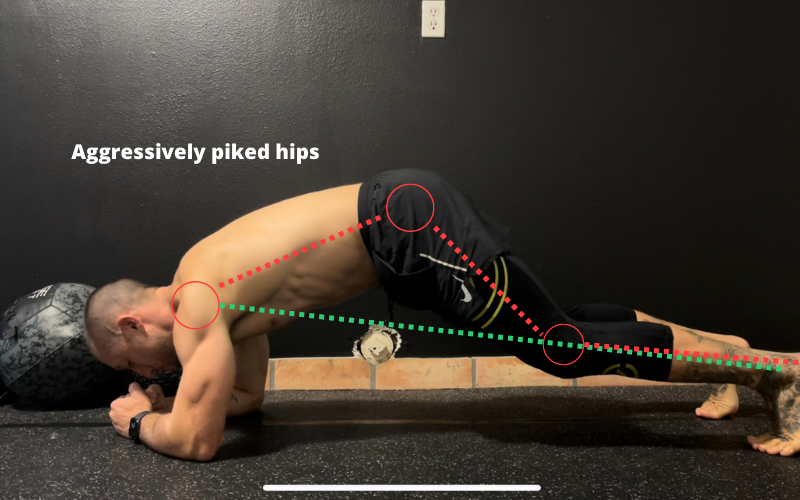
Here, the core muscles are not engaging to support the hips. As a result, the hips pike away from the ground to alleviate pressure, ultimately flexing the hip muscles and driving all the downforce and responsibility into the shoulders and neck.
Error 3: "Drop Knee”
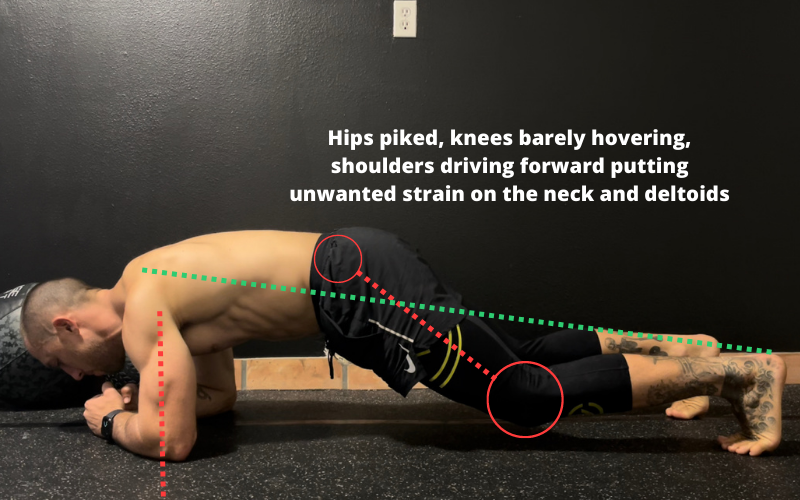
In this deviation, the position itself isn’t terrible, but the knees are disengaged. This will result in inactivity at the quad muscle. If the knees are loose like this, the body is not working as a unit, which is terrible for skiing considering skiing's full-body demands. Ultimately we want to build full-body stability by stressing the core muscles and engaging the surrounding muscles to support them.
You can also see in this photo that the elbow sits behind the shoulder. This is a great way to create shoulder pain. Instead, shift the elbow forward so that the distance between the feet and elbow increases. This will place more stress on the core muscles and decrease shoulder aggravation. You will see this in the next photo.
⭐ Correct Form:
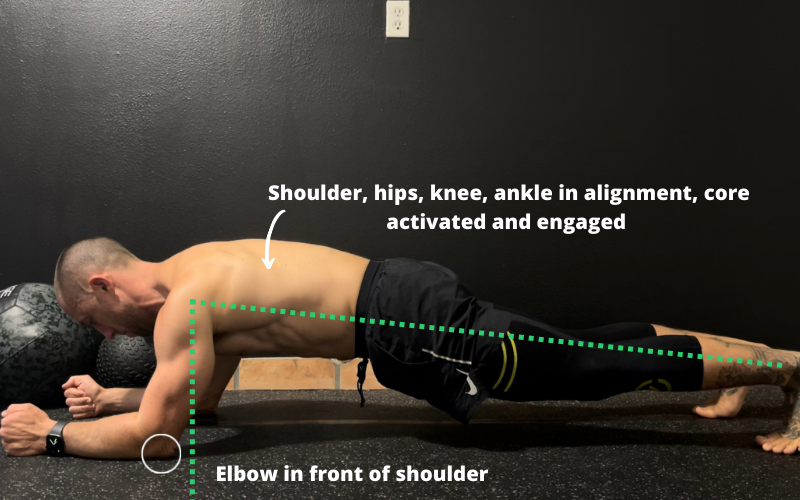
In this photo, demonstrating correct form, the shoulder, hip, knee, and ankle are all in alignment. The quads are engaged to lock out the knee, the hips are level with the shoulders and the core muscles are engaged to prevent drooping toward the floor. Additionally, the elbow is pushed slightly forward. This creates a substantial increase in core muscle stimulation.
This off-season, try adjusting the plank to match Image 4. You’ll be ripping with a stable core built for maxed out days of skiing.
If you enjoy these blog posts and find the information valuable, please share with another skier who would benefit from reading.
Thank You,
Abe - Founder